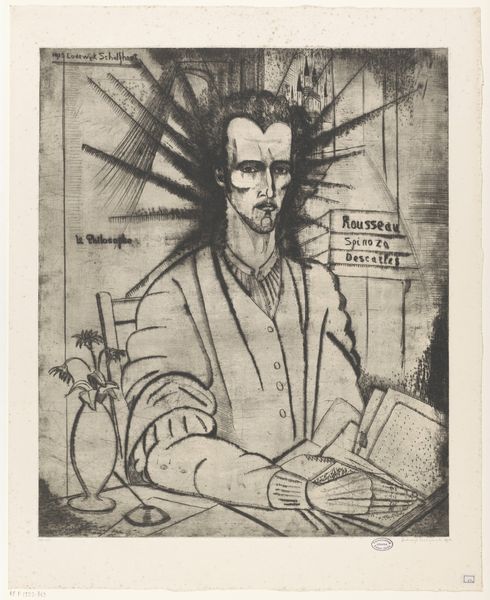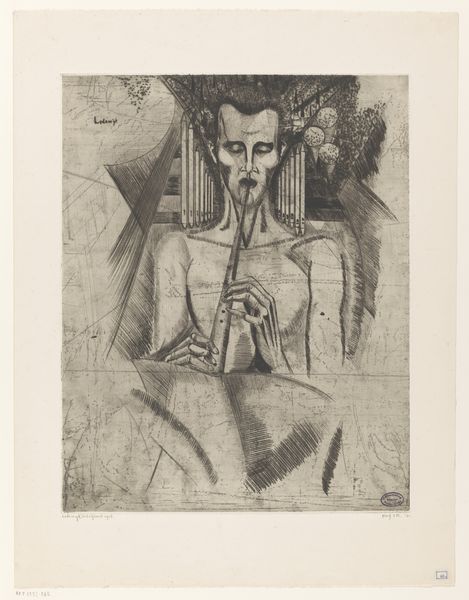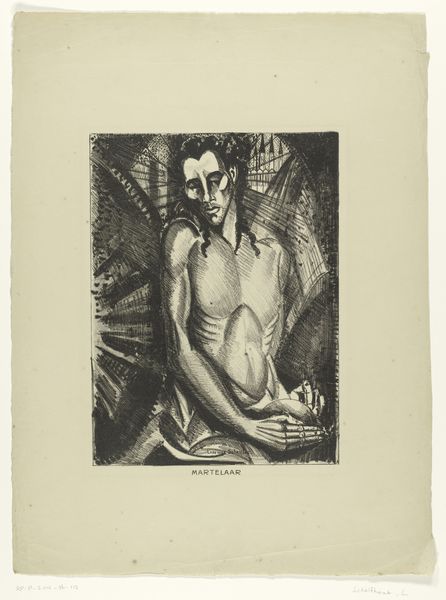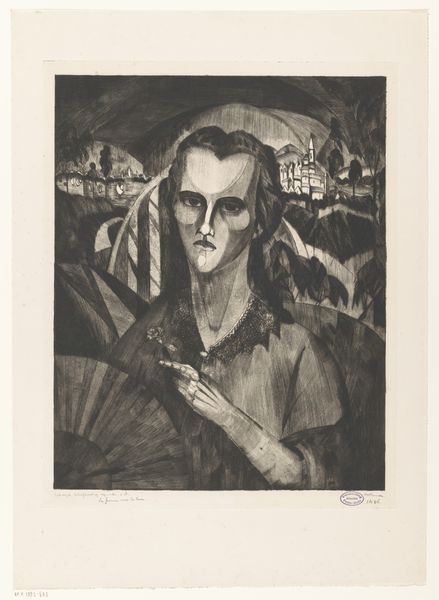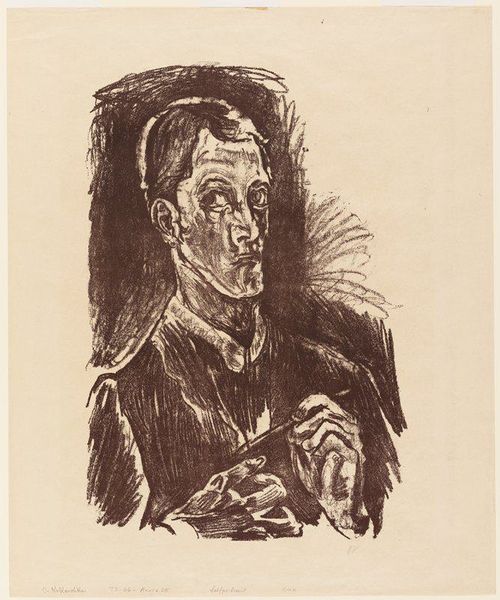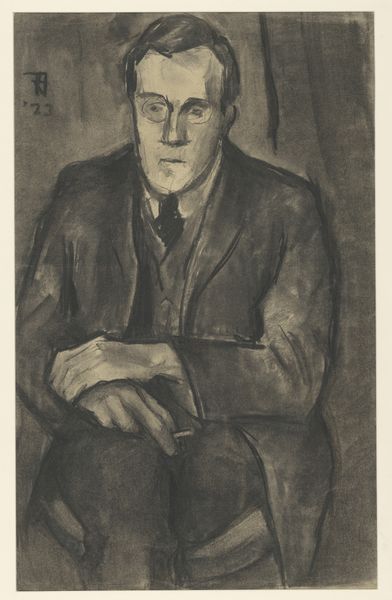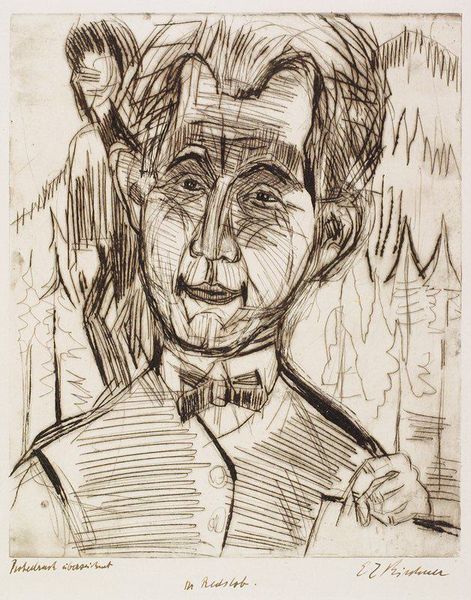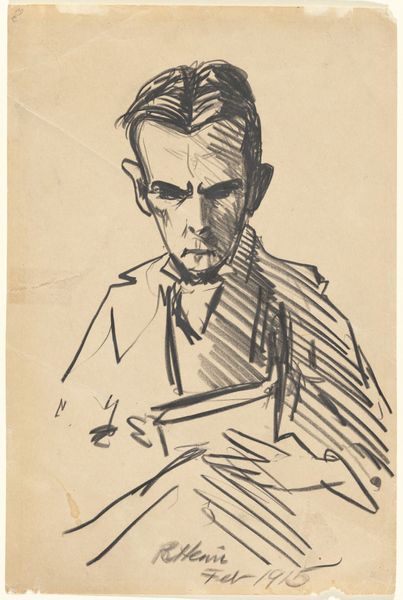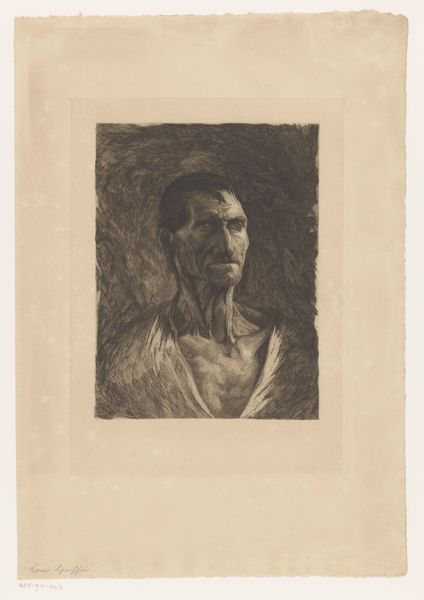
drawing, graphite
#
portrait
#
pencil drawn
#
drawing
#
pencil sketch
#
pencil drawing
#
expressionism
#
graphite
#
portrait drawing
Dimensions: height 596 mm, width 500 mm
Copyright: Rijks Museum: Open Domain
Editor: This drawing, "Filosoof," was made by Lodewijk Schelfhout in 1915. It’s a graphite drawing. I’m struck by how intense the figure's gaze is and the almost fractured background behind him. What symbolic significance do you think the artist might be exploring? Curator: The intensity you observe speaks volumes. The gaze, in portraiture, has always held power. Notice how the geometrical forms surrounding him aren't just background, they're almost cage-like. Is he a prisoner of his own intellect, perhaps? Think of the philosopher as a figure who grapples with truth, sometimes ostracized for it. Do you see any other visual cues supporting this interpretation? Editor: Now that you point it out, the almost skeletal hands holding those papers seem less about knowledge and more about burden. What about the single flower in the vase on the left side of the composition? Curator: Ah, the lone flower! In many traditions, a single flower can represent hope, resilience, or even a fragile life. Considering the prevailing mood, does it feel like a symbol of optimism, or perhaps a poignant reminder of life's transience amidst profound thought? Think of Van Gogh’s sunflowers: vibrancy turned to decay. It introduces complexity, wouldn't you agree? Editor: Definitely. The drawing’s starkness, combined with that one vulnerable flower, adds another layer of meaning. The “philosopher” is burdened by knowledge yet subtly reminded of something much more delicate and vital. Thanks! Curator: Indeed, a dance of contrasts. It reveals how symbols echo across art history. Looking at art like this helps us remember where we came from as a society and where we might be heading, symbolically.
Comments
No comments
Be the first to comment and join the conversation on the ultimate creative platform.
